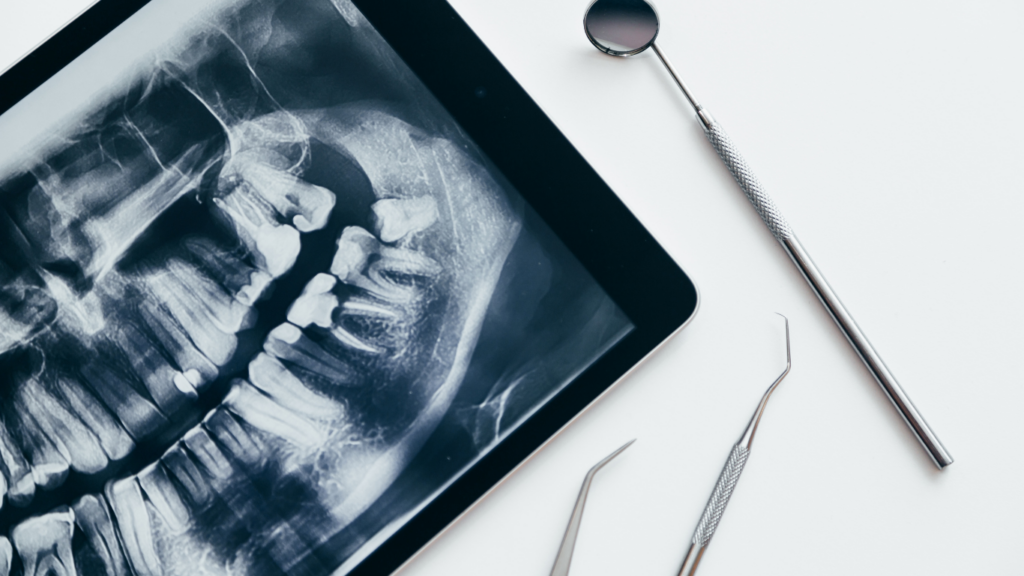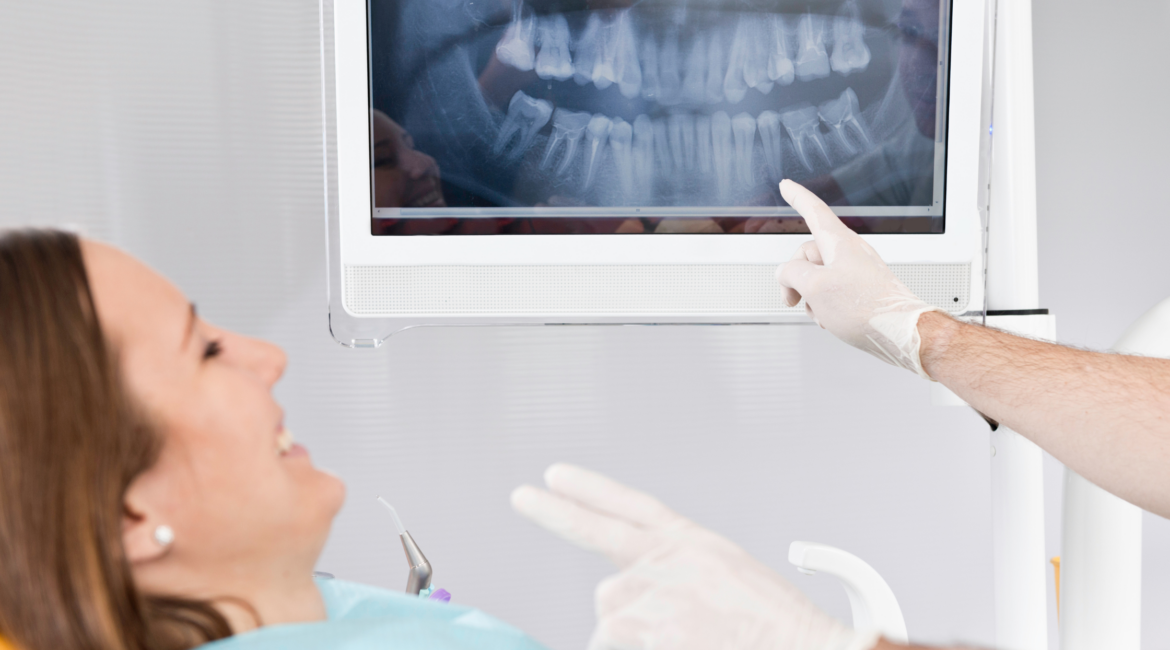Dental X-rays are an essential diagnostic tool that helps dentists detect issues that may not be visible to the naked eye. However, many patients wonder, “are dental X-rays safe?”
Given the concerns about radiation exposure, it is natural to question their safety. This article will explore the risks and benefits of dental X-rays, the measures taken to minimize radiation exposure, and why they remain an indispensable part of oral healthcare.
Understanding Dental X-Rays
Dental X-rays, also known as radiographs, use low levels of radiation to create images of teeth, gums, and the underlying bone structure. These images help dentists diagnose problems such as:
- Cavities (especially between teeth and under fillings)
- Gum disease and bone loss
- Infections or abscesses
- Impacted teeth (especially wisdom teeth)
- Tumors or cysts in the jaw
Dental X-rays come in different types, each serving a specific purpose:
Bitewing X-Rays: These are used to detect cavities between teeth and assess the alignment of upper and lower teeth.
Periapical X-Rays: These focus on a single tooth from root to crown, helping detect infections or deep decay.
Panoramic X-Rays: These provide a full view of the entire mouth, including the jawbone, sinuses, and nasal area.
Cone Beam CT (CBCT) Scans: Used for detailed 3D imaging, especially in implant planning, orthodontics, and complex dental procedures.

Radiation Exposure from Dental X-Rays
One of the main concerns about dental X-rays is exposure to radiation. However, the amount of radiation from modern dental X-rays is extremely low, thanks to technological advancements.
To elaborate, radiation is measured in millisieverts (mSv). Here’s how dental X-ray exposure compares to everyday activities:
- Bitewing X-ray: ~0.005 mSv
- Panoramic X-ray: ~0.01 mSv
- Cone Beam CT scan: ~0.1 mSv
- Annual background radiation (from natural sources like the sun): ~3.0 mSv
- A cross-country flight in the U.S.: ~0.04 mSv
This comparison shows that a single bitewing X-ray emits less radiation than a flight across the country and is only a fraction of the natural background radiation we receive daily.
Why Dental X-Rays Are Considered Safe
Dentists follow strict safety protocols to minimize radiation exposure. Here’s how:
Use of Digital X-Rays
Modern dental offices use digital radiography, which reduces radiation exposure by up to 90% compared to traditional film X-rays.
Lead Aprons and Thyroid Collars
Patients are provided with lead aprons and thyroid collars to shield sensitive areas of the body from radiation.
Minimal and Necessary Use
Dentists only take X-rays when necessary—they do not routinely take them at every visit unless there’s a medical need.
Strict Safety Regulations
The American Dental Association (ADA) and the U.S. Food and Drug Administration (FDA) regulate the use of dental X-rays and ensure radiation exposure is within safe limits.
Are Dental X-Rays Safe for Children and Pregnant Women?
Safety for Children
Children are more sensitive to radiation than adults, but pediatric X-rays use even lower radiation doses.
The ADA and the American Academy of Pediatric Dentistry (AAPD) recommend that X-rays be taken only when necessary for diagnosis and treatment planning.
Safety for Pregnant Women
Pregnant women are often concerned about X-ray exposure. While the radiation from dental X-rays is minimal, most dentists avoid taking X-rays during pregnancy unless it’s an emergency.
If an X-ray is necessary, proper shielding (lead aprons) is used to protect the abdomen and fetus.
When Are Dental X-Rays Necessary?
Not every dental visit requires an X-ray. The frequency of dental X-rays depends on several factors, including:
- Age and oral health history (children and those with high cavity risk may need them more often)
- Symptoms of dental problems (pain, swelling, or unexplained tooth loss)
- History of gum disease or bone loss
- Monitoring after major dental treatments (implants, root canals, or extractions)
For most healthy adults, bitewing X-rays are recommended every 1–2 years, while full-mouth or panoramic X-rays are taken every 3–5 years.

Benefits of Dental X-Rays Outweigh the Risks
The benefits of dental X-rays far outweigh the minimal risks of radiation exposure. Some of the key advantages include:
Early Detection of Dental Problems
Cavities, infections, and gum disease can develop without noticeable symptoms. X-rays allow dentists to detect issues before they become serious.
Prevention of Tooth Loss
By identifying bone loss and decay early, dentists can intervene before tooth extraction becomes necessary.
Accurate Guidance for Dental Treatments
X-rays are essential for procedures like dental implants, braces, root canals, and wisdom tooth extractions.
Saves Time and Money
Detecting dental issues early can prevent expensive and painful treatments later on.
Dental X-Rays Are Safe and Essential!
Thanks to modern technology, radiation exposure from dental X-rays is extremely low, and strict safety measures ensure that patients receive only the necessary X-rays.
The benefits, such as early detection of dental problems, prevention of serious complications, and accurate treatment planning, make X-rays an indispensable tool in oral healthcare.
If you have concerns about dental X-rays or haven’t had one in a while, schedule an appointment with Modern Day Dental if you happen to be located in the Jacksonville, FL area! Our team prioritizes safety while ensuring you receive the best possible care for a healthy, long-lasting smile.

